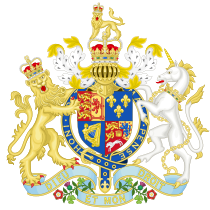The Combination Acts were passed by the Tory government of William Pitt the Younger in response to its fear of unrest or revolution among the working classes. The first Act in 1799, (39 Geo. III, c. 81), An Act to prevent Unlawful Combinations of Workmen, received royal assent on 12 July, and a second Act followed in 1800, (39 & 40 Geo III c. 106). The Acts banned workers from combining to form trade unions and prevented them from striking, calling for shorter hours or increased pay, thus driving organised labour underground.[1] The second Act modified the first to include combinations of employers.[2] A campaign to repeal the Acts succeeded in 1824, when they were replaced by the Combinations of Workmen Act 1825, which allowed the formation of unions but restricted their activities.[1][3]

